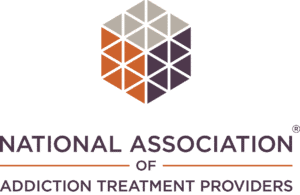Navigating the Recovery Journey
In the wild dance of life, sometimes our friends stumble. When it comes to the challenging journey of recovery from addiction, being a true friend means being a guiding light, a steady hand, and a source of unwavering support. Silicon Valley Recovery stands as an oasis in this journey, offering a haven where healing is not just a process but a personalized, heart-centered experience.
The Art of Support: A Friend’s Guide to Silicon Valley Recovery
Understanding the Landscape
Before embarking on this journey with your friend, it’s crucial to grasp the unique terrain of addiction recovery. Silicon Valley Recovery, with its cutting-edge methods and compassionate staff, provides a safe space where individuals can breathe freely, away from the suffocating grip of addiction.
Lending an Ear: Communication is Key
Open Dialogues: Breaking the Silence
- Encourage your friend to express their feelings, fears, and aspirations openly.
- Silicon Valley Recovery fosters an environment where communication is not just encouraged but celebrated.
Active Listening: More than Words
- Pay attention not only to what your friend says but also to what remains unspoken.
- In the nurturing arms of Silicon Valley Recovery, every word is acknowledged, and every silence is understood.
Navigating the Detox Doldrums
Weathering the Storm: Silicon Valley Recovery Style
Compassionate Detox: Beyond the Physical
- Silicon Valley Recovery prioritizes a holistic detox approach, addressing both the physical and emotional aspects.
- Your friend won’t just detox; they’ll embark on a journey towards reclaiming their whole self.
Embracing Discomfort: The Growth Zone
- Recovery is uncomfortable, but it’s also transformative.
- Silicon Valley Recovery sees discomfort not as an obstacle but as a stepping stone to a brighter, addiction-free future.
Building a Foundation: From Support to Empowerment
Finding Purpose Beyond Addiction
Personalized Care: Tailored for Triumph
- Silicon Valley Recovery doesn’t believe in one-size-fits-all solutions.
- Your friend’s journey is unique, and so is the care they’ll receive.
Empowerment through Connection: Fellowship Matters
- Encourage your friend to forge connections with fellow travelers on the road to recovery.
- Silicon Valley Recovery is not just a treatment center; it’s a community of individuals supporting each other’s rise.
Celebrating Victories, Big and Small
Small Wins, Big Impact
Daily Triumphs: The Ripple Effect
- Silicon Valley Recovery understands that every small victory counts.
- From waking up without cravings to conquering a personal goal, celebrate the victories that pave the way for larger triumphs.
Milestones Matter: The Journey is the Destination
- Mark milestones in your friend’s recovery journey.
- Silicon Valley Recovery acknowledges and celebrates each milestone, recognizing that recovery is a journey, not a destination.
A New Beginning, Not The End
In wrapping up this guide to supporting a friend through addiction recovery, it’s important to realize that recovery is not the end of the road; it’s the beginning of a new and vibrant chapter. Silicon Valley Recovery, with its blend of heart-centered care and evidence-based practices, transforms the recovery journey from a daunting path into a promising adventure.
In supporting a friend through recovery, we become architects of hope, builders of resilience, and champions of second chances. Silicon Valley Recovery provides not just treatment but a sanctuary for rebirth, where individuals are not defined by their struggles but empowered by their triumphs.











